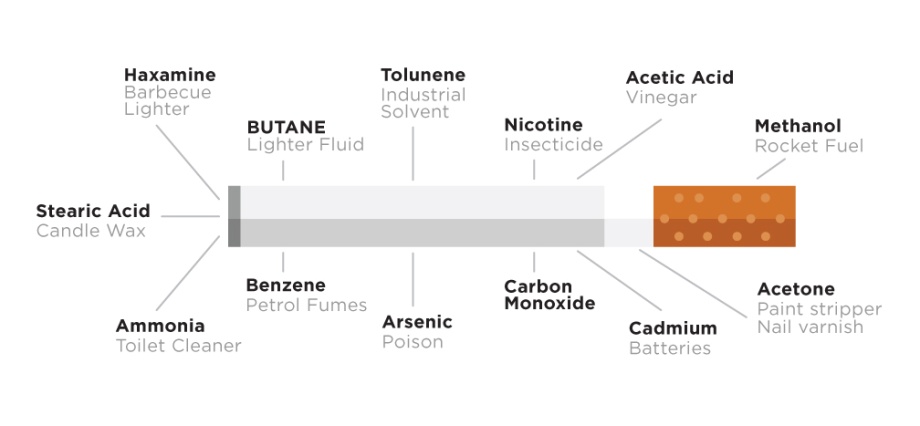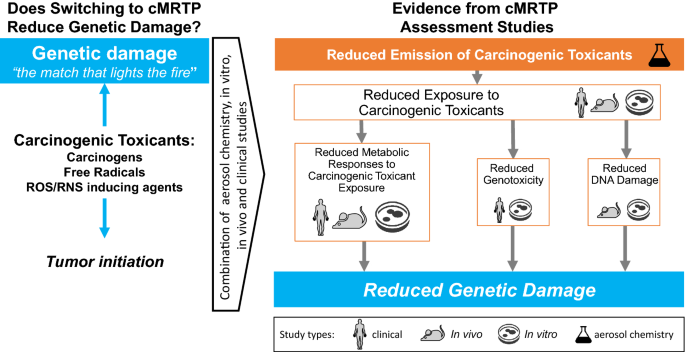What Are 4 Carcinogens Found In Tobacco
Four new substances have been added to a list of carcinogens compiled by the U.S. Department of Health and Human Services. Which can be found in fuel products and even tobacco smoke.
- Carcinogens In Cigarettes List
- Carcinogens In Tobacco List
- What Are 4 Carcinogens Found In Tobacco Poisoning
- What Chemicals Are Carcinogens
Breathing even a little tobacco smoke can be harmful (1-4). Of the more than 7,000 chemicals in tobacco smoke, at least 250 are known to be harmful, including hydrogen cyanide, carbon monoxide, and ammonia (1, 2, 5). Among the 250 known harmful chemicals in tobacco smoke, at least 69 can cause cancer. Cigarettes contain tobacco, a known carcinogen. A carcinogen may act on deoxyribonucleic acid, causing dangerous changes, or it may work to increase the rate of cell division. This change in cell division may work to increase the probability of DNA changes. Some carcinogens promote the development of cancer in other ways as well. About 95% of the total smoke content is made up of gases (also known as vapor phase); principally oxygen, nitrogen and carbon dioxide. The particulate phase is quite rich and contains at least 4000 various compounds, most of which are hazardous carcinogens. Among such diversity in tobacco smoke, there are more than sixty identified carcinogens.
Lung cancer is still the leading cause of death in both men and women around the world, killing more than one million people every year. Extensive epidemiological data clearly links cigarette smoking with lung cancer, mostly due to the presence of cancer-causing chemicals called carcinogens that are present in present in cigarette smoke.
YAKOBCHUK VIACHELSLAV Shutterstock
Cigarette smoke is a complex, reactive and dynamic mixture containing approximately five thousand chemicals, which arguably makes it the most important source of toxic chemical exposure in humans. A large amount of studies on carcinogenesis caused by cigarette smoke and its constituents give a firm base for understanding the underlying mechanisms of lung carcinogenesis in humans.
Carcinogenic constituents of cigarette smoke

The mainstream smoke that emerges from the cigarette mouthpiece is an aerosol with approximately 1010 particles per mL. About 95% of the total smoke content is made up of gases (also known as vapor phase); principally oxygen, nitrogen and carbon dioxide. The particulate phase is quite rich and contains at least 4000 various compounds, most of which are hazardous carcinogens.
Carcinogens In Cigarettes List
Among such diversity in tobacco smoke, there are more than sixty identified carcinogens. For 20 of them there is convincing evidence of their causative role for lung cancer formation in laboratory animals and/or humans. Of these, the major players are likely aromatic polycyclic hydrocarbons and tobacco-specific nitrosamine 4-(N-nitrosomethylamino)-1-(3-pyridyl)-1-butanone.
Cigarette smoke can also be viewed as a tumor promoter. Most of its activity seems to stem from uncharacterized, weakly acidic compounds. For example, catechol is one of the most salient co-carcinogens found in cigarette smoke, but it also includes methylcatechols, undecane, decane, fluoranthene, pyrogallol, pyrene and benzopyrene.
Carcinogens In Tobacco List
In addition, cigarette smoke harbors high levels of acrolein, a recognized toxic compound to the pulmonary cilia, as well as other agents (such as acetaldehyde, formaldehyde and nitrogen oxides) that could indirectly contribute to the mechanism of pulmonary carcinogenicity.
While individual contributions of aforementioned carcinogens may never be known due to the complexity of the system, there is little doubt that their removal from cigarette smoke (if that was even a possibility) would substantially decrease the negative consequences of inhalation.
How Carcinogens in Cigarette Smoke Cause Lung Cancer

The carcinogens in cigarette smoke that are inhaled can be metabolically activated (most notably by cytochrome P450 enzymes in the liver) to intermediate compounds that covalently or (sometimes) directly bind to DNA. The resulting DNA adducts are key to chemical carcinogenesis since they can result in miscoding and permanent mutations.
If such mutations are seen in critical regions of important growth control genes, the end-result may be the loss of normal cellular growth control mechanisms, genomic instability, as well as cancer in the long run. This is supported by a substantial body of evidence that demonstrates higher levels of DNA adduct levels in smokers when compared to the individuals that do not smoke.
Furthermore, nicotine and tobacco-specific nitrosamines are known to bind to nicotinic and other cellular receptors, which results in protein kinase B activation and other changes. This then leads to decreased apoptosis (i.e.programmed cell death), increased transformation and increased growth of small blood vessels. Although nicotine per se is not carcinogenic, it may prompt carcinogenicity in ways that are still not completely elucidated.
Cigarette smoke also contains tumor promoting factions and inflammatory agents, and activates cyclooxygenase-2 and epidermal growth factor receptor. Many studies have demonstrated the co-carcinogenic effects of catechol, which is an important constituent of cigarette smoke. Finally, inflammation inherent to smoking is linked to tumor promotion and cancer development.

Since the risk for lung cancer (but also other tobacco smoke-related diseases) appears to be dose-dependent, the concentration reduction of the most important carcinogens in cigarette smoke may lower the risk of tobacco smoking. And although there are still a handful of unresolved issues, the current state of knowledge enables us to construct reasonable and testable hypotheses addressing the susceptibility of individual smokers to lung cancer induced by tobacco.
Sources
- Hecht SS. Tobacco Smoke Carcinogens and Lung Cancer. In: Penning TM. Chemical Carcinogenesis. Springer Science & Business Media, 2011; pp. 53-74.
- https://academic.oup.com/jnci/article/91/14/1194/2549271
- www.cancer.org/…/carcinogens-found-in-tobacco-products.html
- https://www.nature.com/articles/1205803
- https://www.ncbi.nlm.nih.gov/pmc/articles/PMC3084482/
- https://www.ncbi.nlm.nih.gov/pubmed/20361554
- https://www.sciencedirect.com/science/article/pii/S1535610803002228
Further Reading
- All Lung Cancer Content
- Lung Cancer
- Lung Cancer Causes
- Lung Cancer Symptoms
- Lung Cancer Diagnosis
What Are 4 Carcinogens Found In Tobacco Poisoning


Last Updated: Jan 30, 2019
Written by
Dr. Tomislav Meštrović
Dr. Tomislav Meštrović is a medical doctor (MD) with a Ph.D. in biomedical and health sciences, specialist in the field of clinical microbiology, and an Assistant Professor at Croatia's youngest university – University North. In addition to his interest in clinical, research and lecturing activities, his immense passion for medical writing and scientific communication goes back to his student days. He enjoys contributing back to the community. In his spare time, Tomislav is a movie buff and an avid traveler.
Source: Read Full Article
What Chemicals Are Carcinogens
| Substance | Description |
|---|---|
| Formaldehyde | Commonly used to embalm and preserve human remains, this chemical is also used for a variety of applications, including use as a disinfectant and for producing other chemicals. |
| Polycyclic aromatic hydrocarbons (PAHs), such as benzo[a]pyrene | These chemicals are products of incomplete combustion and are found in automotive exhaust and tobacco smoke. |
| Arsenic | This element is extremely poisonous to humans and other organisms, which explains why it is used effectively in herbicides and insecticides. |
| Nickel (compounds) | This metallic element is used in stainless steel, magnets, coins, and some alloys. Nickel sulfide fumes (i.e. nickel compounds) are regarded as a known human carcinogen by the International Agency for Research on Cancer (IARC), and the gas nickel carbonyl is very toxic to humans. |
| Polonium-210 | A radioactive element that results from the decay of radon, which is classified as a human carcinogen by the International Agency for Research on Cancer (IARC). |
| Beryllium | A lightweight metallic element that is used in the aerospace, aircraft, and nuclear industries. Many industrial waste processes, including municipal waste incineration, release beryllium, although the major emission source is the combustion of coal and fuel oil. |
| Chromium VI | Has a variety of uses, including the production of stainless steel, wood preservation, leather tanning, pigments in dyes, for paints, inks, and plastics, and as anti-corrosion and conversion coatings. |
| Cadmium | This chemical element is used in the manufacture of batteries and paint pigments. |
| Aromatic amines, including 2-naphthylamine and 4-aminobiphenyl | Used to manufacture azo dyes. |
| 1,3-Butadiene | Used to produce synthetic rubber. |
| Benzene | An important component of gasoline that is also used to make some types of rubbers, lubricants, dyes, detergents, drugs, explosives, and pesticides. |
| Vinyl chloride | An industrial chemical chiefly used to produce the polymer polyvinyl chloride (PVC). Previously used as an inhalation anaesthetic. |
| Ethylene oxide | A key industrial chemical that, although too dangerous for direct household use, is used industrially for making many consumer products, such as detergents, thickeners, solvents, and plastics. A highly flammable and poisonous gas that leaves no residue on the items it contacts, pure ethylene oxide is a disinfectant that is widely used in hospitals and the medical equipment industry to replace steam in the sterilization of heat-sensitive tools and equipment, such as disposable plastic syringes. |